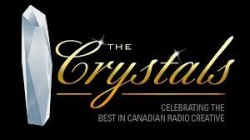by Ryan Ghidoni
PSR Contributor
Thursday April 7th, 2016
Audio Active Advertising – Episode 12: Why most ads FAIL to inspire ACTION
Another year of Crystal awards for radio creative will be handed out May 4th at Canadian Music Week. So it seems appropriate to take a closer look at the criteria the judges use to make their selections.
Your ads will be judged based on how well they achieved these two goals:
GOAL ONE: Demonstrate the RESULTS of the product
AND
GOAL TWO: Inspire the listener to ACT on the call to action.
These two things will make an effective radio ad.
The quickest way to undermine BOTH of these goals is to include MULTIPLE CALLS TO ACTION in your advertisement.
“So if you want to make your life better with Product X, all you have to do is come down to 157 North York Street just west of the Donner overpass, call 204-555-22-82, that’s 204-555-22-82 OR visit us online at productxisthebest.com.”
The first and easiest thing you can teach your clients to make their ads more effective is…
…you need to choose ONE CALL TO ACTION.
WHY?
Listing off a client’s location, phone number and website will take away from the time needed to achieve GOAL ONE: Demonstrate the RESULTS of the product.
You need time to grab the listener’s attention, draw them into the story of a common problem, and then show them how the product can solve that problem in an interesting and memorable way. It’s difficult to do in 25 seconds. It’s almost impossible to do in 15.
Listing off a client’s location, phone number and website will actually undermine your chances of achieving GOAL TWO: Inspire the listener to ACT on the call to action.
Imagine you are stranded in a desert. After walking aimlessly for two days your mouth becomes so dry that your tongue feels like sandpaper against your lips. Luckily, you come across a sign that says “WATER”.
Now…if that signs has one arrow pointing right…you’ll walk in that direction, find the water and live.
If that same sign has three arrows pointing in different directions…you will sit their and ponder which way to go.
“I wonder which direction is closest to water?”
“I wonder if one of these places also has food?”
“What if one is a trap?”
All while you sit there…you’re not moving any closer to the water.
CHOICES PARALYZE. CHOICES ARE OVERWHELMING.
So when you put three ways to act on your offer you will actually increase the chances that the listener won’t act at all.
Make it easy for people to buy your product by providing one clear path for them to do so.
How do I choose the right call to action?
Pick the one that directly relates to how you sell your product.
Telephone for Restaurants, Pizza Delivery, Tee Times, and Spa Appointments. Unless you have a novelty number, such as 222-2222, don’t waste time giving the number. Simply say, “Call us today”. Nobody ever pulls his or her car over to write down a phone number. The time is better spent selling the benefits of your product. Fortunately, everyone has this magical machine in their pocket where they can find your number. The machine will even dial for you when you select “call”.
Address for Showroom products like Automobiles, Furniture, Appliances and Electronics. Don’t use the actual address. People don’t give directions by saying “go to unit B 1459 Bixby Avenue”. Use easy to spot landmarks as references. “Just past the perimeter on Portage”, “The big yellow building on King Street”, or “Right next to the Wal-Mart on Regent”. Your directions should sound like a buddy telling them where to go in a way that’s easy to remember.
Website. Use your website if they can purchase your product from your online store. Websites are also a great default for when you can’t decide which call to action to focus on. Simply make sure the phone number and address are prominent on your landing page.
Radio ads are supposed to maximize the listener response to the sales message. So talk to your clients today about using one “call to action” so that they can remove the most common hurdle.
Next week we’ll talk about “Getting the listener’s attention” and how using a “puppy baby monkey” is a bad idea.
Ryan Ghidoni is an 18-year veteran of radio advertising and has worked with some of the most creative sales reps, writers, producers and voice talent in the business.
CHECK OUT “Audio Active Advertising” every week on Puget Sound Radio. THE ONLINE AGENCY IS OPEN: Get “Audio Active” ads for your clients with Audio Active Advertising’s online agency. Check out over 100 Effective Ad Examples and then become the next one by ordering an Audio Active Campaign. Go to audioactiveadvertising.com.
Email Ryan:
Ry**@au********************.com













Most ads fail for one reason and one reason only. You have radio stations with 4-500 clients. You have radio stations with 3 maybe 4 copy writers. It is simply impossible for 4 copy writers to do due diligence to clients, when they have to pump out hundreds of spots. This is why production house’s take on so many clients. They provide good customer service.
You are absolutely right Tim. The advice I offer in this column can’t be executed without the proper resources. The sales team is responsible for bringing clients on board. Creative is responsible for making sure we keep them by creating effective ads. Unfortunately, the creative department’s contribution doesn’t show up on a spread sheet so it can become the target of cut backs OR not expand fast enough to meet the growing workload of an operation. In your opinion…what do you believe the right account to writer ratio is to make due diligence possible? How about production?
Hiring more copy writers is the right plan of attack. Unfortunately, you know and I know this will not happen and the cycle of pushing out copy on the fly will continue. Ultimately the ones who do suffer are the client, followed by “advertising doesn’t work” from the client, which in turn allows for no repeat in the sale for the sales rep. A vicious circle it becomes.